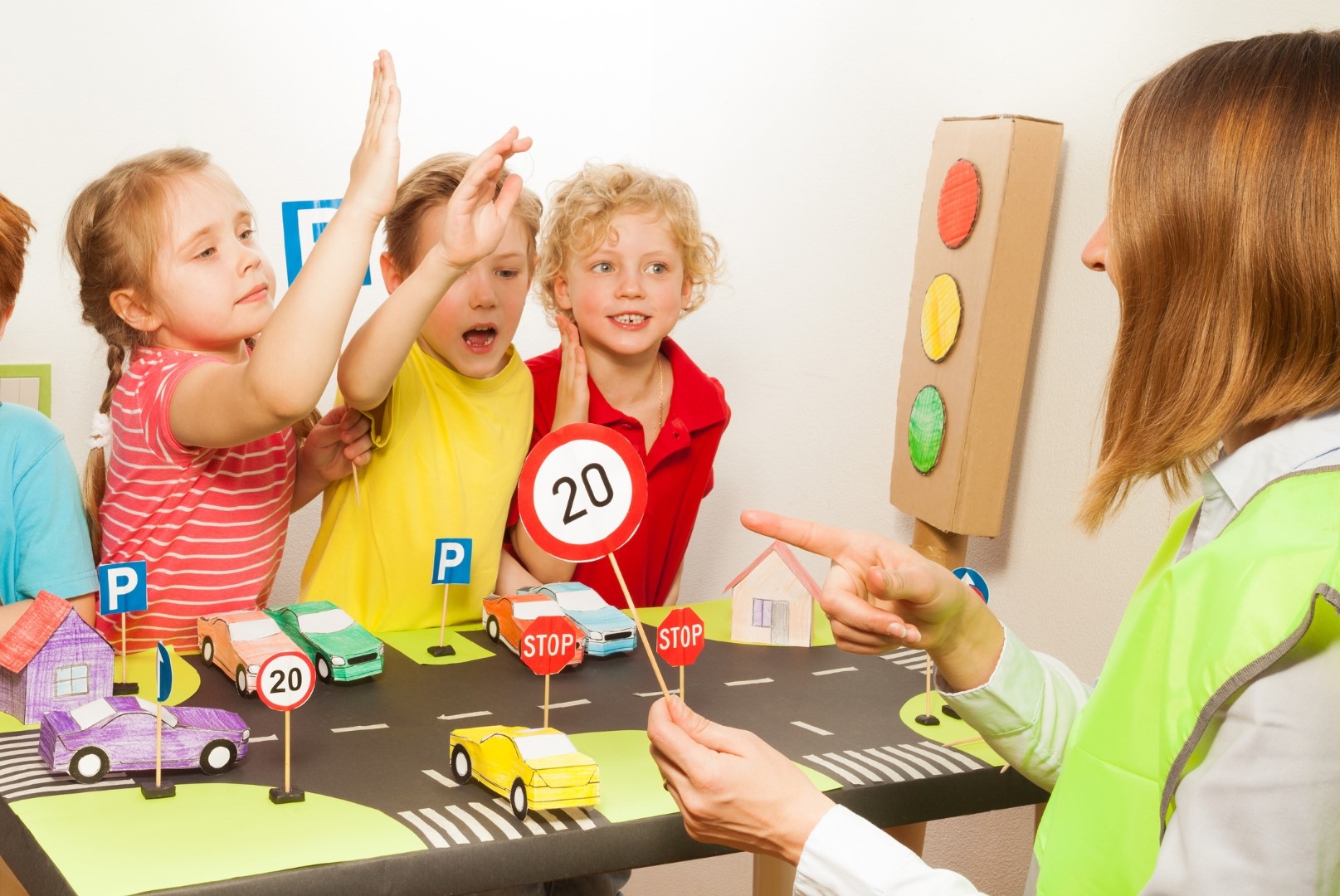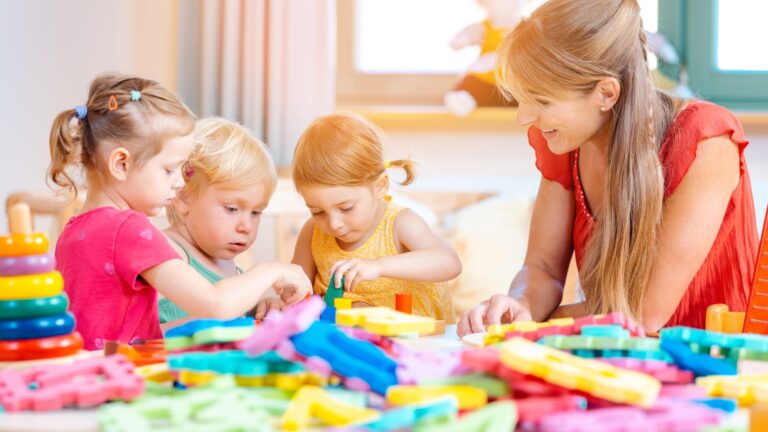Reducing Stress to Enhance Learning
In the journey of early childhood education, the role of educators extends far beyond the traditional boundaries of teaching. It’s about nurturing, understanding, and guiding young learners through their formative years. Dr. Stuart Shanker, a renowned expert in child development, offers a profound insight:
“The key to changing a child’s trajectory is to identify and reduce their stress load, rather than trying to teach better self-control. The latter emerges naturally as a result of improved self-regulation.”
This message resonates deeply with our ethos, emphasizing the significance of creating an environment that prioritizes the well-being and holistic development of children. Let’s delve into how we can embody this approach, empowering educators to foster a nurturing space for young learners to flourish.
Understanding Self-Regulation
Self-regulation is the ability to manage one’s emotions, behaviors, and body movements when faced with challenging situations. It’s a skill that children develop over time, influenced significantly by their surroundings and the adults in their lives. Dr. Shanker’s perspective encourages us to look beyond mere discipline, focusing instead on helping children learn to regulate themselves.
Personal Well-being
The well-being of the educator or caregiver is intrinsically linked to their ability to effectively support and nurture a child. Educators who prioritize their own well-being are better equipped to handle the demands of teaching and provide a stable, nurturing environment for their students. Well-being encompasses physical, emotional, and mental health. When teachers are well-rested, nourished, and mentally prepared, they can approach their responsibilities with patience, clarity, and positivity.
Emotional Resilience
The ability to remain calm and composed, especially in challenging situations, is vital for educators. A calm demeanor can create a reassuring atmosphere for children, who often look to adults as models for how to react in various situations. When teachers manage their own emotions effectively, they can offer more constructive responses to students’ needs.
Modeling Healthy Coping Mechanisms
Children learn by observation and imitation. When educators demonstrate how to manage stress and emotions effectively, they teach children these skills implicitly. For instance, if a teacher takes a deep breath and maintains composure when facing a classroom challenge, students observe and internalize this behavior as a method to deal with their own frustrations.
Educators who are well and calm can provide consistent support and guidance. This consistency is crucial for building trust and security, which are foundational for effective learning and development.
I need to be well and calm first to help and support the child.
This message encapsulates a key insight: the well-being of educators is not just beneficial for them personally but is also critical for their capacity to foster a supportive and enriching environment for children. By prioritizing their own health and calmness, educators not only enhance their own quality of life but also contribute significantly to the emotional and mental development of their students. This creates a cycle of mutual growth and learning that benefits the entire community.
Identifying and Reducing Stress
Stress in young children can be elusive, often manifesting in ways that are easy to misinterpret. As educators, it’s crucial to develop a keen eye for signs of stress in our students. These can range from changes in behavior to subtle physical cues. Once identified, the next step is to address these stressors proactively.
Reducing stress might involve modifying the learning environment, adjusting our teaching methods, or even altering our own responses to children’s behavior. It’s about creating a space where children feel safe, supported, and understood.
Since young children often lack the language or self-awareness to articulate their feelings, stress can manifest through various behaviors or changes in routine, which adults might not immediately recognize as signs of distress.
Example: Lucas’s Story
Lucas is a 5-year-old boy known for his playful nature and love for outdoor play. His teachers have observed a shift in his behavior over the past few weeks. Lucas, who used to be the first to participate in any game or activity, has become increasingly reluctant to join in, especially during outdoor playtime. Instead, he clings to his teachers, seeking constant reassurance, and appears visibly anxious when it’s time to go outside.
Misinterpretation of Behavior
Lucas’s teachers might initially think he’s just going through a phase of increased attachment or perhaps being stubborn about not wanting to play outside. They might interpret his clinging behavior as a need for attention or interpret his reluctance to engage in play as laziness or defiance.
Recognizing Stress
Upon closer observation and reflection, the teachers might consider that Lucas’s behavior change could be a response to stress. They start to gather more information, speaking with his parents and observing his interactions more closely. They discover that Lucas recently had a frightening experience with a neighborhood dog while playing in his yard at home. Since then, he associates being outside with feeling unsafe, leading to stress and anxiety during outdoor play at school.
Addressing the Stress
Once the teachers understand the root of Lucas’s behavior, they can take steps to address his stress:
- Providing Reassurance
Teachers can offer Lucas extra support and reassurance during outdoor activities, staying close to him and encouraging gradual engagement at his own pace. - Creating a Safe Space
Introducing a “buddy system” where Lucas can choose a friend to accompany him during outdoor play might help him feel more secure. - Encouraging Expression
Teachers can encourage Lucas to express his fears through drawing or storytelling, helping him process his experience. - Gradual Exposure
Slowly and gently encouraging Lucas to engage in outdoor activities, starting with shorter durations and gradually increasing as he becomes more comfortable, can help desensitize his fears. - Collaboration with Parents
Working closely with Lucas’s parents to ensure consistency in addressing his fears both at home and at school can provide a united front of support.
Through this example, it’s clear that children’s stress responses can be complex and often manifest through behaviors that require careful interpretation. By adopting a thoughtful and observant approach, educators and caregivers can better identify and address the underlying causes of stress, supporting children’s well-being and development.
The Ripple Effect of Reduced Stress
When children experience reduced stress, they’re better positioned to engage with their environment and learning. Self-control and self-regulation naturally improve, paving the way for enhanced learning experiences. This transformation not only benefits the individual child but also creates a more harmonious and productive classroom environment.
As educators, continuous self-improvement is part of our journey. Understanding and applying the principles of self-regulation in our teaching practices can profoundly impact our effectiveness. It’s an ongoing process of learning, reflecting, and adapting — a journey we undertake for ourselves and our students.
In our shared mission to nurture young minds, collaboration is key. Sharing experiences, strategies, and insights with fellow educators can enrich our understanding and implementation of these principles. Together, we can create a collective wisdom that elevates our approach to early childhood education.
A Commitment to Growth and Well-being
At Kindergartens International Institution, we’re dedicated to supporting educators in their journey toward excellence. Embracing Dr. Shanker’s message, we encourage you to reflect on how you can identify and reduce stress in your classroom, fostering an environment where self-regulation and learning thrive. Remember, your growth as an educator is integral to the holistic development of the children you teach. Together, let’s shape a future where both educators and students reach their fullest potential, anchored in well-being and continuous learning.
Thank you for your unwavering dedication to early childhood education. Your role is pivotal in shaping the future, one child at a time.

Elevate your teaching skills and stay ahead of the curve! Receive our monthly Insights, packed with professional development opportunities, classroom inspiration, and the latest trends in education. Don’t miss out on the chance to take your teaching to the next level. Subscribe now!







